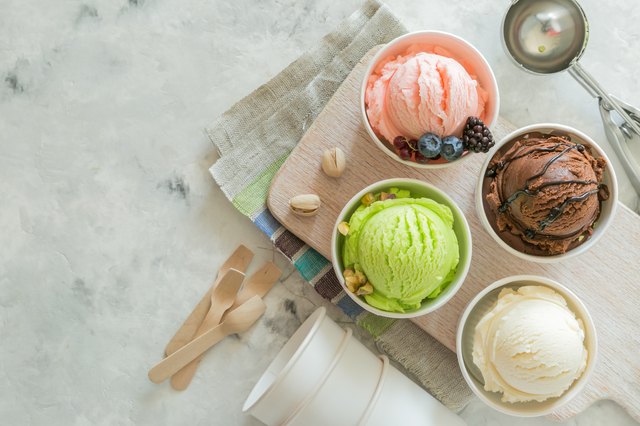Ice cream, the frozen treat that evokes memories of sweltering summer days and childhood indulgences, can sometimes disappoint when it stubbornly refuses to freeze. This can be a disheartening setback, especially when unexpected guests arrive or you’re eagerly anticipating a frosty treat. Fear not, dear reader, for this comprehensive guide will equip you with the knowledge and techniques to tame your unruly ice cream and restore its delectable frozen state.

Image: www.hunker.com
Understanding the Science Behind Ice Cream
Before delving into the practical solutions, it’s essential to understand the scientific principles governing ice cream’s freezing process. Ice cream is essentially a frozen emulsion, a mixture of fat (from cream or milk), sugar, and water. During the freezing process, the water molecules form ice crystals, while the fat molecules and sugar molecules interfere with the ice crystals’ growth, resulting in the smooth, creamy texture we love.
Common Causes of Ice Cream Resistance to Freezing
When ice cream resists freezing, several factors could be at play:
-
Insufficient Cold:
Ensure your freezer is set to a temperature of 0°F (-18°C) or colder. Warmer freezer temperatures can prevent the ice cream from solidifying completely.
-

Image: www.angi.comIncorrect Ratio of Ingredients:
An imbalance between the fat, sugar, and water content can hinder freezing. Too much sugar or water can disrupt the formation of ice crystals, resulting in a soft, slushy texture.
-
Dissolved Solids:
Dissolved solids, such as salt or corn syrup, can interfere with the freezing process by lowering the freezing point of the mixture.
-
Air Incorporation:
Overbeating or excessive incorporation of air during churning can create air pockets that hinder heat transfer, slowing down the freezing process.
Effective Solutions to Fix Your Ice Cream
Now that we’ve identified the potential causes, let’s dive into the practical solutions to restore your ice cream to its frozen glory:
-
Verify Freezer Temperature:
Use a freezer thermometer to ensure your freezer is maintaining a temperature of 0°F (-18°C) or colder. If necessary, adjust the freezer temperature setting accordingly.
-
Check Ingredient Ratios:
Refer to the recipe or packaging instructions to ensure the fat, sugar, and water content are balanced correctly. If the mixture appears too thin or soupy, consider adding more fat or reducing the amount of sugar or water.
-
Limit Dissolved Solids:
Avoid adding salt or corn syrup to your ice cream mixture, as these ingredients can interfere with freezing. If you’ve already incorporated them, consider diluting the mixture with additional milk or cream.
-
Control Air Incorporation:
Be cautious not to overbeat the ice cream mixture during churning. Excessive air incorporation can create unfavorable air pockets that slow down freezing.
-
Use a Cold Bath:
Place the ice cream maker bowl in a larger bowl filled with ice and salt for 20-30 minutes before churning. This will help to pre-cool the bowl and improve the freezing efficiency.
-
Freeze in Stages:
Divide the ice cream mixture into smaller portions and freeze them incrementally. This technique allows the ice cream to solidify more quickly and evenly.
-
How To Fix Ice Cream That Won’T Freeze
Consider a Commercial Ice Cream Maker:
If you consistently experience difficulties with freezing ice cream, investing in a commercial ice